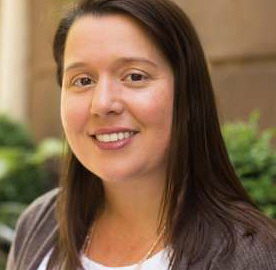 Homeboy Came to Orange: A Story of People’s Power by Ernest Thompson and Mindy Thompson Fullilove, Professor of Urban Policy and Health at Milano, tells the story of Ernie “Home” Thompson, who dedicated his life to organizing the powerless. We talked to Mindy about the book launch on October 17 and the weeklong 400 Years of Inequality 2018 Curriculum Disruption.
Homeboy Came to Orange: A Story of People’s Power by Ernest Thompson and Mindy Thompson Fullilove, Professor of Urban Policy and Health at Milano, tells the story of Ernie “Home” Thompson, who dedicated his life to organizing the powerless. We talked to Mindy about the book launch on October 17 and the weeklong 400 Years of Inequality 2018 Curriculum Disruption.
What was the experience of writing this book like for you and your father Ernest (Home, Homeboy, Big Train) Thompson?
My dad was very ill while we were working on the book, and a couple of times was at death’s door. He hung on to finish and died the day we thought we were done. That fear — that he wouldn’t make it — made it a very intense time. And he must have been in a lot of pain and discomfort, though he was quite stoic. Our other big problem was that I didn’t know much about the stories he was telling me and he was not a patient man. At the beginning it was very tumultuous. But as I learned more, it became a very exciting and precious experience. [Watch Mindy talk about writing the book with her father at the celebration of the re-release of Homeboy Came to Orange hosted by the University of Orange.]
Why release a new edition of the book right at this moment?
We are living through a period of terrible division in American society. Ernie’s message was that we had to find ways to work together to solve our common problems. It seemed like a perfect book for this moment. The earlier edition had a very 70s look, which just didn’t work anymore — we wanted new material, too, to update readers. It was a great experience to work with publisher Lynne Elizabeth, of New Village Press, cover designer Pam Shaw of Tigerpaw Shaw Designs, and layout artist Rich Brown to create a timely and inviting new version of this book.
The second “400 Years of Inequality Curriculum Disruption” is October 12-18. What does your dad’s story teach us about disrupting the ecology of inequality?
My dad grew up under the terrible conditions of the post-Reconstruction, Jim Crow south. He moved north as part of the Great Migration, and got the kind of work that black men could get: dangerous and poorly paid factory work. He worked all his life to build power to fight Jim Crow and the abuse of workers. He became an expert at disrupting the ecology of inequality. The story focuses on his work in Orange, NJ, a small industrial city whose very survival was threatened by a highway that sliced through its middle and deindustrialization. Happily, the organizing that he led created organizations and people’s power that have sustained the city through those tribulations. This is the story that we need to know right now: we can build power for the powerless and disrupt the ecology of inequality.
Follow the daily disruptions on the New School Twitter account, and for more information check out 400yearsofinequality.org.
Let your voice be heard and join the conversation with #400YearsofInequality.



